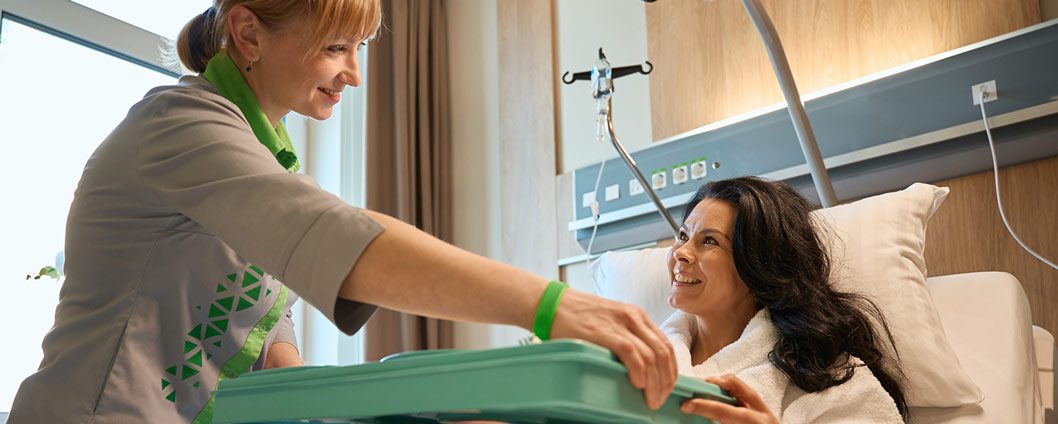Mastering the Art of the Bed Bath: Comfort, Efficiency, and Dignity
The bed bath is a fundamental aspect of patient care, yet it’s an art that requires skill, sensitivity, and a deep understanding of patient needs. It’s more than just cleaning; it’s an opportunity to connect with patients, assess their skin integrity, and promote their overall well-being. For Patient Care Technicians (PCTs), mastering the bed bath is essential. This post will explore tips and tricks for providing comfortable and efficient bed baths, with a particular focus on handling patients with mobility issues and, above all, maintaining their dignity.
Preparation is Key:
Before you even approach the bedside, gather all your supplies: a basin of warm water (test the temperature on your inner wrist!), soap or cleanser, washcloths, towels, a clean gown, gloves, and any other necessary items like lotion or powder. Explain the procedure to the patient, even if they seem unresponsive. This simple act of communication shows respect and can help alleviate anxiety. Ensure the room is warm and private, closing curtains or doors as needed.
Prioritizing Comfort and Efficiency:
- Start with the Face: Begin with the cleanest area, the face, using a fresh washcloth and gentle strokes. Allow the patient to wash their face themselves if possible, promoting independence.
- Work Top to Bottom: Follow a systematic approach, washing from the cleanest to the dirtiest areas. This prevents the spread of bacteria.
- Expose Only What’s Necessary: Drape the patient appropriately, exposing only the area you are washing at that moment. This helps maintain their privacy and warmth.
- Gentle but Thorough Cleansing: Use gentle but firm strokes to cleanse the skin. Pay attention to skin folds and areas prone to pressure sores.
- Rinse Thoroughly: Ensure all soap is removed to prevent skin irritation.
- Keep the Patient Warm: Cover the patient with a towel or blanket as you wash each area to prevent chills.
- Encourage Participation: Involve the patient as much as they are able. This promotes independence and self-esteem.
Handling Patients with Mobility Issues:
- Communicate Clearly: Explain each step before you do it, especially when moving or repositioning the patient.
- Use Proper Body Mechanics: Protect yourself from injury by using proper lifting techniques. Keep your back straight and lift with your legs.
- Seek Assistance When Needed: Don’t hesitate to ask for help from a colleague if you need to move or reposition a patient who is heavy or has significant mobility limitations.
- Utilize Assistive Devices: Use bed rails, transfer boards, or other assistive devices as needed to ensure patient safety and ease the process.
- Positioning for Comfort: Use pillows or rolled towels to support the patient in a comfortable and safe position after the bath.
Maintaining Dignity: The Cornerstone of Care:
- Respect Privacy: Always knock before entering the room and ensure the patient has privacy during the bed bath.
- Communicate with Respect: Address the patient by their preferred name and speak to them in a calm, respectful tone.
- Offer Choices When Possible: Allow the patient to make choices when possible, such as what type of soap they prefer or which area they would like to wash first.
- Be Patient and Understanding: Patients may be embarrassed or uncomfortable during a bed bath. Be patient, understanding, and reassure them that you are there to help.
- Maintain a Professional Demeanor: Even when dealing with challenging situations, maintain a professional and compassionate demeanor.
- Remember the Human Connection: A bed bath is more than just a task; it’s an opportunity to connect with your patient on a human level. Take the time to listen to them, offer encouragement, and show genuine care.
Beyond the Basics:
- Skin Assessment: Use the bed bath as an opportunity to assess the patient’s skin for any signs of breakdown, redness, or other issues. Report any concerns to the nurse.
- Therapeutic Touch: A gentle touch can be comforting and therapeutic for patients. Use lotion to moisturize the skin after the bath, providing a soothing massage.
- Documentation: Document the bed bath, including any observations about the patient’s skin condition or any other relevant information.
Mastering the art of the bed bath is a crucial skill for every PCT. By prioritizing comfort, efficiency, and, most importantly, dignity, you can provide compassionate care that promotes healing and well-being for your patients. It’s in these seemingly small acts of care that we truly make a difference.



